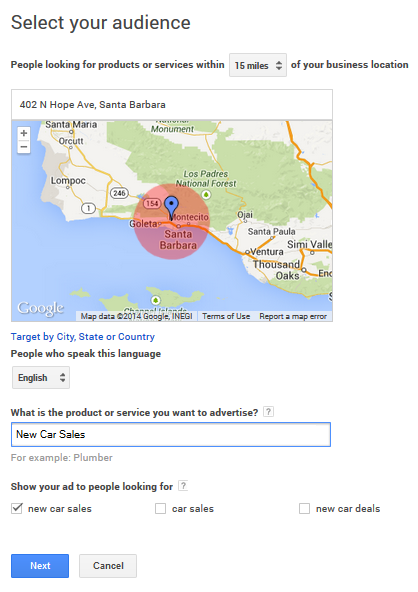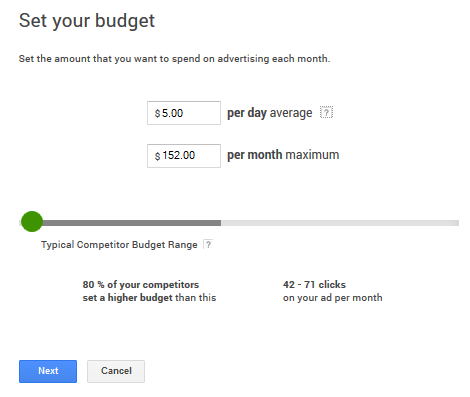Editor’s Note: This article was originally published by Web Marketing Today. Practical Ecommerce acquired Web Marketing Today in 2012. In 2016, we merged the two sites, leaving Practical Ecommerce as the successor.
In “Use Hyperlocal Advertising to Reach Nearby Consumers,” I suggested that Google AdWords Express can help attract local prospects. In this article I’ll address AdWords Express in more depth.
Whether you are a national multi-location brand or a local small business, you will likely need a multichannel approach to be visible to the local consumers. The primary multichannel options are optimizing — for both organic rankings and to use advertising — (a) desktop search, (b) mobile search, and (c) map search.
Certainly most all businesses seek to be ranked highly in the free organic listings. However, it is not always easy to achieve. Patience is always a necessity and you never know if your ranking will stay in place. Google’s algorithm changes and competitor efforts can make organic rankings difficult to sustain.
In “5 Reasons to Use PPC Ads for Local Marketing,” I reviewed the opportunities for pay-per-click advertising. They include:
- Targeting local consumers by geography;
- Dominating the first page of Google search results;
- Appearing in the search results faster.
Certainly advertising on any search engine with PPC ads can be complicated. For something simpler, consider Google AdWords Express. It is not only easier to manage, but less costly too.
AdWords Express used to be called Google Boost. In the summer of 2011 Google organized the local advertising options so that Google Places and Google AdWords Express work together. AdWords Express is effectively “AdWords Lite” with many simpler options, including the following:
- Showing up with a blue map marker in the maps;
- Geographically targeting your advertisement beyond what your Google+ Local listing can show;
- Features from Google+ Local will show in your ads, such as the customer ratings and reviews.
AdWords Express is easier to use, less complicated, and requires only that you claim your Google+ Local listing first. Assuming that is completed, starting AdWords Express is quite simple.
Campaign Features Made Easy
In AdWords Express, Google pretty much oversees the campaign management for you.
- Pay only for clicks. As is the case for all AdWords ads, if you ad shows and no one clicks, you pay nothing. If someone clicks on an ad, you will be charged the rate for the clicks within your daily budget limits.
- Start and stop anytime. As with any advertising on the web, you can start and stop anytime. There are minimal repercussions for stopping and starting at a later date.
- Location of ad. You ads will appear in Google search, Google Maps, mobile searches, and tablet searches.
- Circumstances of ad appearance. There are two ways ads appear to local customers. The first is if a search includes a location, such as “clothing store New York City.” This means your ad could show up for people in another town. The other option is if the person searching is in your local area and searches for, say, “clothing store.”
- Geographic targeting. Your options here are only for local advertising. However, within your local area you can reach communities that your Google+ Local listing is not able to.
- Campaign management. This is automated by Google for your convenience and kept within the budget limit you have chosen.
- Tracking and reporting. Available tracking and reporting features include view, clicks, calls, search terms, and your budget.
- Additional formats. There are no special ad formats available with AdWords Express. So, ad extensions, banner ads, and video ads, as examples, are not possible. This is what makes AdWords Express simpler.
- No website needed. This the best part. You don’t need a website. If you don’t have a website, Google will direct your potential customers to your Google+ Local page, which you had to claim and update before you could get started.
- Setup time. Google suggests the setup time is less than 10 minutes.
Creating, Managing an AdWords Express Campaign
There are five simple steps — which Google guides you through — to set up an AdWords Express ad. I’ll review the steps below, using a car dealership as an example.
- Select your audience. Choose the area you want your ad to show from your business location. You can choose up to 40-mile radius. This is followed by selecting the language, type of product or service, and then specifying under what circumstances you want the ad to appear.

Google AdWords Express: Select your audience.
- Create or edit your ad. Your ads include a headline (one line of 25 characters), ad text (two lines of 35 characters), where you want visitors to go, and what information you want to display.

Google AdWords Express: Create your ad.
- Set your budget. This will vary widely based on competition, geography, population, and other factors specific to your industry. The best part is that you can update your budget or cancel your ad anytime.

Google AdWords Express: Set your budget.
- Review your ad. We’re almost done at this point. Google asks you to review your information, ad, and budget.

AdWords Express: Review your ad.
- Check out. The last step will be dependent upon your billing methods and if you have a promotion code to use.
Conclusion
The next time you see a blue marker on a Google map you will know it is an advertiser. You will also see that advertiser appear above the 7-pack of map listings and the pin on the map.

AdWords Express on search results.
Hopefully, the amount it took to read this article is about as long as it would take you to set up an AdWords Express ad.


